Two New Missions to Unlock the Secrets of Jupiter’s Largest Moons
Volcanoes, liquid oceans, the largest moon in the system: Jupiter’s Galilean moons have stories to tell. We’re going to find out what.
Space research often seems like it’s focused on Mars. And why not? Mars is close to home, it’s comparatively easy to land on and observe, and we can imagine one day living there. It’s the only planet we know populated solely by robots.
But, cosmically speaking, Mars isn’t all that interesting. Other parts of the solar system are much more dynamic, promising new big discoveries. Today, Jupiter’s neighborhood is the most interesting space in our solar system.
Jupiter itself is fascinating. Million year storms. Gravity that warps the solar system around it. The great red spot. Jupiter holds mysteries to how our solar system formed, and perhaps what will happen to it next.
But Jupiter’s largest moons may be just as captivating.
Look at Ganymede, for instance. Its diameter is about 77% that of Mars. If it weren’t orbiting massive Jupiter, we’d call it a planet (it’s bigger than both Mercury and Pluto). Unlike Mars, we actually know that Ganymede has a huge liquid water ocean underneath its icy surface. It’s magnetosphere is stronger than Mercury’s (despite having less mass and density), causing auroras or glowing, hot, electrified gas around the the north and south poles. And that’s just one moon!
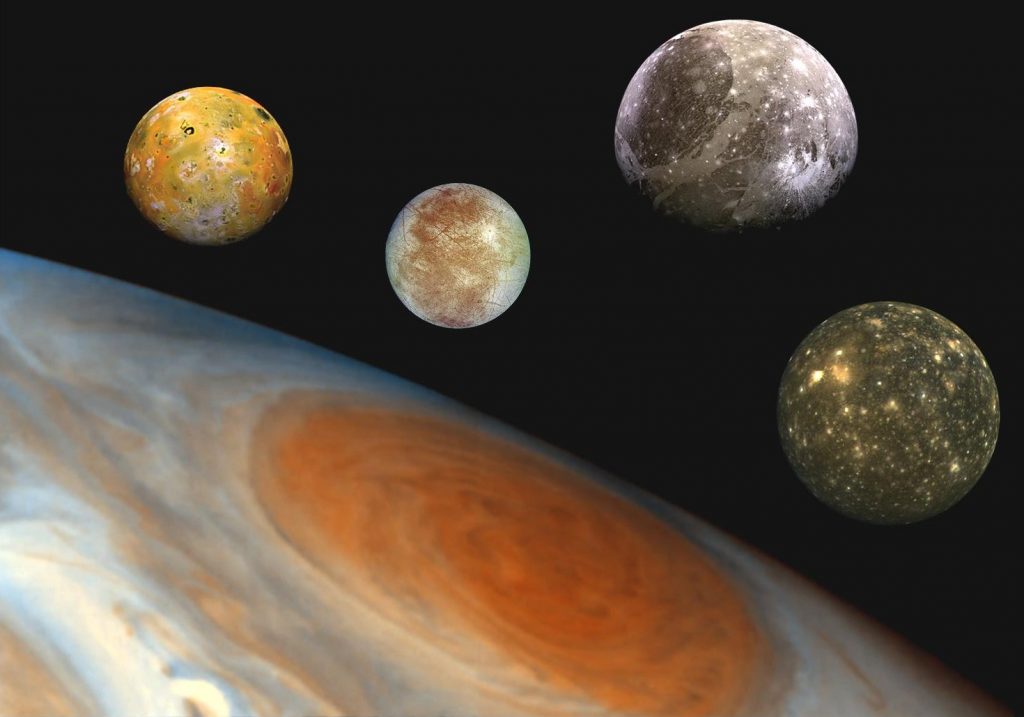
Each Galilean moon is unique and mysterious. Io is the closest to Jupiter and covered in volcanoes (more than 400 volcanoes in an area about the size of our moon). Europa is the second closest, a ball of ice with a subsurface ocean and is considered the most likely place in the solar system for us to find life. Ganymede is the third closest, and Callisto the fourth. All together, they comprise a complex and diverse ecosystem that we still barely understand.
The Galilean moons: Io, Europa, Ganymede, and Callisto. Ganymede is the only moon in our solar system with an intrinsic magnetosphere. The largest ocean in the solar system may be found inside Europa, while the moon with the most craters is likely Callisto. And then there is Io, a moon of volcanoes that also happens to have its own electrical charge.
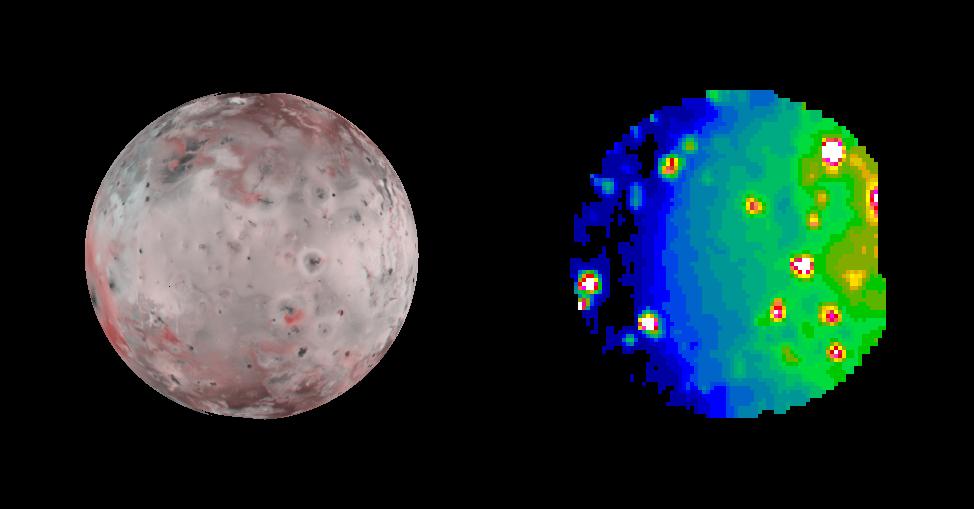
The problem is that the Galilean moons are difficult to study.
First, they are much further away than Mars. For example, it takes light from the sun about 13 minutes to reach Mars, while it takes about 43 minutes to reach Jupiter. The logistics of reaching Jupiter make detailed study much more difficult. Second, since Jupiter’s orbit is five times farther from the sun than Earth’s location, the planet and its moons receive only 1/25th the amount of sunlight we see on earth, complicated imaging as well as powering devices with solar energy.
Third, Jupiter is surrounded by a massive radiation belt that can destroy or degrade electronics and optics. These energetic particles can create both temporary and permanent damage to image quality, with ionizing and non-ionizing energy transfer to the sensor increasing dark current and adding random noise, making it harder to get a clear image (in an already light-starved environment!)
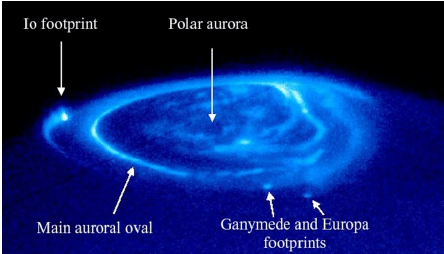
What we do know of the Galilean moons comes mostly from two intrepid satellites: Galileo (launched in 1989, arrived in 1995) and Juno (launched 2011, arrived 2016). Other outer-planet missions such as Pioneer, Voyager, Cassini, and New Horizons passed by Jupiter on their way to the outer system, but didn’t spend any significant time there.
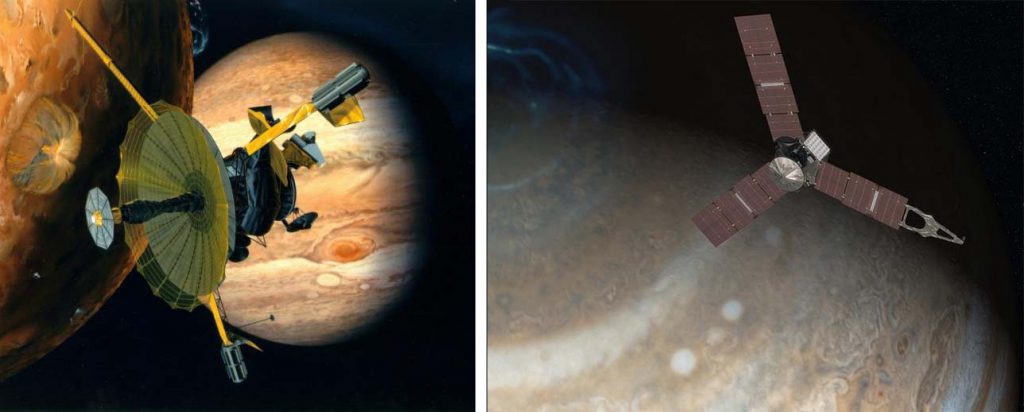
In the next decade, we’re going to make an effort to unlock the secrets of the Galilean moons. First, Juno is still orbiting the planet and has a couple planned flybys of the satellites. Then two new missions will soon launch within the next few years: NASA’s Europa Clipper and ESA’s Jupiter Ice Moons Explorer (JUICE).
Juno, orbiting Jupiter’s poles
Most planets have a degree of radiation around them, the interaction between the magnetosphere and particles in orbit. But the radiation belt around Jupiter is so much worse than anywhere else in the solar system. Any spacecraft approaching Jupiter is going to have to deal with its radiation belt, lest their innards become fried and useless within days of reaching the gas giant.
Scientists believe that the planet’s atmosphere includes a layer of hydrogen under such incredible pressure it acts as an electrical conductor. Combined with Jupiter’s fast rotation (one day on Jupiter is only 10 hours long), this generates a powerful magnetic field that hurls electrons, protons and ions at nearly the speed of light. This system is then fed by Io, the volcanic moon that spews massive amounts of sulfur and other particles into space, which then become charged by Jupiter’s massive magnetic field.
How does the Juno spacecraft deal with the radiation belt? Very carefully or not at all. Juno’s highly elliptical orbit is around Jupiter’s poles, taking it either very close to the planet (4,200 kilometers) where the radiation is minimal, or way out past the orbit of Callisto (about 1,883,000 kilometers). It approaches Jupiter from the north and exits to the south. Juno’s predecessor, Galileo, had an equatorial orbit and thus dealt with much more radiation during its mission, causing damage to its scientific instruments. Juno also has a radiation hardened electronics vault, the first of its kind used in deep space, to protect its electronics.
Juno has seven primary scientific payloads:
- Ultraviolet imager/spectromter (UVS)
- Infrared imager/spectrometer (JIRAM)
- A tool to measure radio waves and plasma (JADE and JEDI)
- A radio and plasma experiment (Waves)
- A vector magnetometer (MAG)
- A gravity/radio science system (Gravity Science)
- A six-wavelength microwave radiometer to take measurements of Jupiter’s atmosphere (MWR)
Juno also carries the JunoCam, a visual spectrum camera that is used less for scientific observations, and more to take 3-color (red, green, blue) images of Jupiter during Juno’s first seven orbits around the giant planet for education and public outreach. You can download, discuss, and even vote on JunoCam images on a dedicated site managed by the Southwest Research Institute.
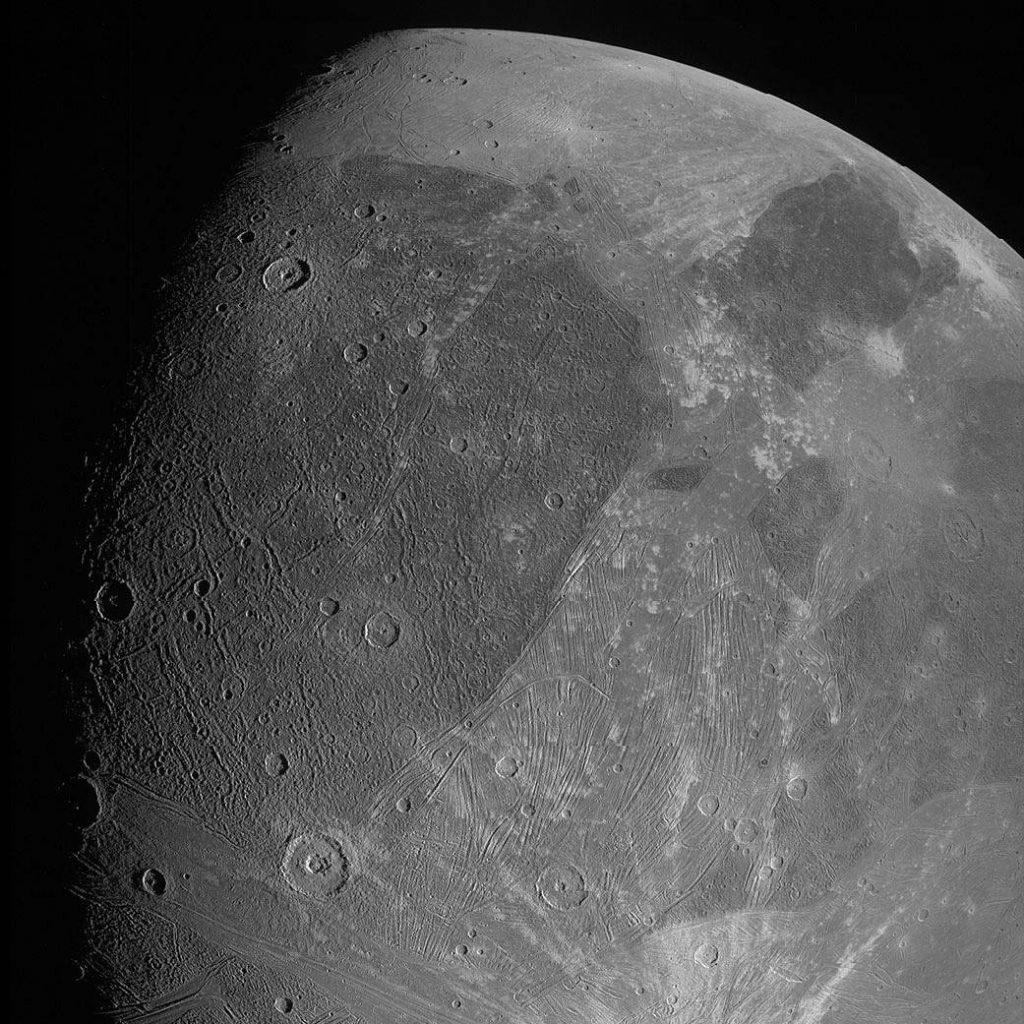
One of Juno’s more interesting non-scientific instruments is its star tracker camera.
With a 512 x 512 17 micron pixel front illuminated area array image sensor provided by Teledyne e2v, the device is essentially a camera with a built-in star chart. “It looks at a patch of sky, picks out stars it knows, and uses their coordinates to tell the spacecraft which way it’s pointing,” noted NPR in 2016.
The star tracker camera was designed to ensure very high pointing accuracy and stability over long periods and to survive the severe radiation surrounding Jupiter, as Juno flies closer than any other spacecraft.
Since Juno’s arrival, the star tracker has been used to take pictures around the planet, including of the dark side of Ganymede.

Juno’s mission has been twice extended by NASA, with the current plan to deorbit in 2025, after taking closer looks at Europa (in 2022) and Io (2024).
The Europa Clipper: Passing by, again and again
Europa has long fascinated scientists because of its subsurface ocean and its potential to host microbial life. Whereas Juno’s mission has been primarily to study Jupiter itself and can thus plot a course to avoid the planet’s radiation belts, any mission to the Galilean moons (except for Callisto, which falls outside the belt zone) will not be able to perform the same maneuvers while completing its scientific objectives.
Thus, the Europa Clipper. Currently set to launch in October 2024, the plan for the spacecraft will be to “sail” in and out of the radiation belt (like the old clipper trading ships hauling freight in the Atlantic ocean), performing up to 44 close flybys of Europa, at altitudes of 25 to 2,700 km. Scientists hope that, on its closest approach to the moon, the Clipper will be able to fly through some of the plumes jetting from Europa’s surface to test the water’s composition.
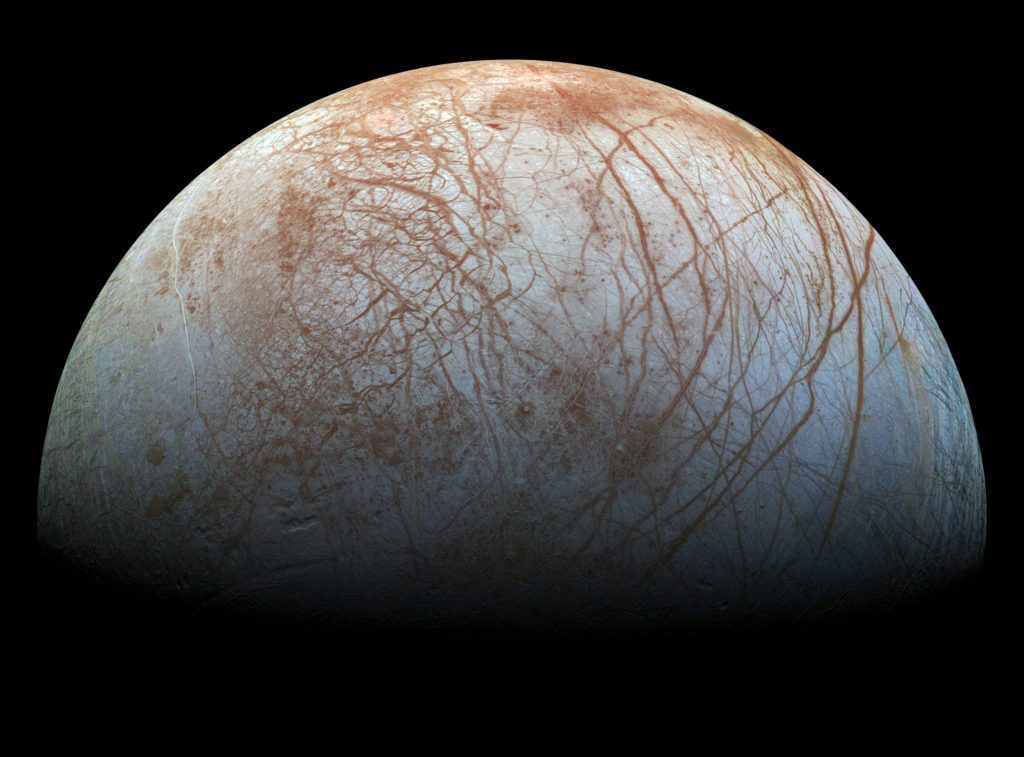
The Clipper has eight primary planned scientific instruments:
- Europa Thermal Emission Imaging System (E-THEMIS): for high spatial resolution and multi-spectral imaging of the moon’s surface in mid to far infrared, to look for geologically active areas.
- Mapping Imaging Spectrometer for Europa (MISE): a near infrared spectrometer to probe the surface composition of Europa.
- Europa Imaging System (EIS): a visual spectrum camera to map the surface at resolutions of 50 meters, with select areas of half a meter resolution.
- Europa Ultraviolet Spectrograph (Europa-UVS): to detect particles in the moon’s exosphere (the area where particles are still gravitationally bound).
- Radar for Europa Assessment and Sounding: Ocean to Near-surface (REASON): a dual-frequency ice-penetrating radar system that will be used to map the moon’s interior.
- Plasma Instrument for Magnetic Sounding (PIMS): to measure the plasma and magnetic fields of the moon, which will help study the subsurface ocean.
- Mass Spectrometer for Planetary Exploration (MASPEX): to study the moon’s thin atmosphere to analyze the composition of the surface ice and subsurface ocean.
- Surface Dust Analyzer (SUDA): a mass spectrometer that will be used, if possible, to directly sample water from the moon’s plumes.

Teledyne will supply a couple components to the Europa Clipper, specifically infrared sensors (MWIR CHROMA‐A) to the MISE spectrometer.
The Clipper has three primary objectives: to confirm the subsurface ocean and study its process of interacting with the ice shell surface; study the composition of Europa’s ice and ocean; study the geology and characteristics of the moon, including recent geologic activity.
If successful, the Europa Clipper could be just the first of more NASA missions to Europa, with a Europa Lander currently in the proposal stage.
JUICE to make history at Ganymede
Whereas the Europa Clipper has a single moon as its target, its companion spacecraft from the ESA will study three of the Galilean moons. JUICE (JUpiter ICy moons Explorer) will launch in August 2023 and reach Jupiter in August 2031 with the mission of studying Ganymede, Callisto and Europa.
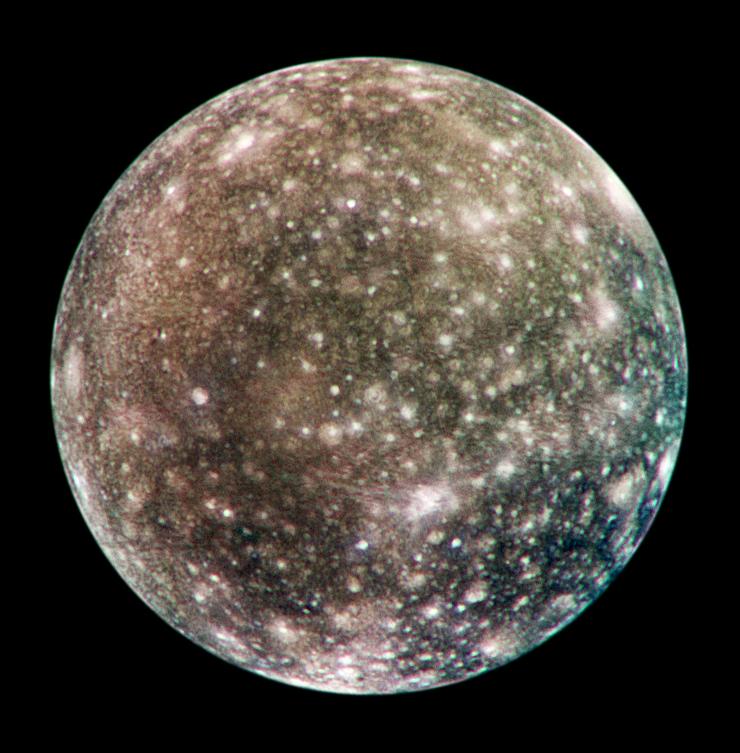
JUICE will study all three of its target moons, but its primary objective will be Ganymede. In September 2032, JUICE is expected to enter orbit around the moon, the first time in human history that a spacecraft has orbited a moon other than our own. According to the ESA, JUICE will have two primary themes: 1) What are the conditions for planet formation and the emergence of life? 2) How does the solar system work?
Much of this work will be done around Ganymede, where the radition environment around Jupiter is its most hostile. While JUICE will carry instruments similar to those of both Juno and the Europa Clipper, radiation tolerance is a major concern, making extra testing vital to confirm it can meet its science goals.
Teledyne will support JUICE with several components for the MAJIS (Moons and Jupiter Imaging Spectrometer) instrument, including infrared detectors and focal plane electronics.
A key instrument in the remote sensing package is JANUS, an optical camera operating over a wavelength range of 350 nm to 1064 nm. JANUS will be used to study the external layers of Jupiter’s atmosphere, the ring system and the planetary bodies. The new CIS 115 sensor for JANUS is designed to achieve its scientific goals: the camera features resolution of better than 5m/pixel and SNR better than 100, which it needs for its 200 km altitude orbit of Ganymede. Its predicted quantum efficiency, when using e2v’s Multilayer-2 anti-reflective coating is better than 70% at wavelengths from 400 nm to 750 nm at -40°C, helping it capture images despite the difficult environment. JUICE is hoped to get 50 times better surface coverage of Ganymede compared to the Galileo mission.
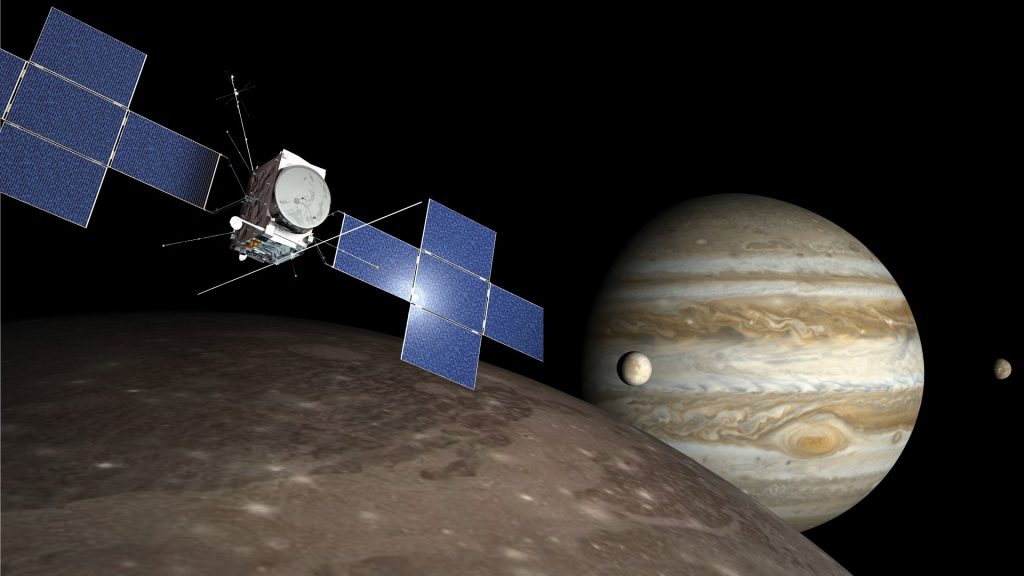
While Io does not currently have its own mission in the works (Juno, JUICE and the Europa Clipper will all take a look at it when they can), a proposed mission called the Io Volcanic Observer is being considered by NASA, even though it lost out recently to NASA’s two upcoming missions to Venus.
Building towards a fundamental understanding of the solar system
The study of Jupiter and its moons is inextricably linked to the study of how our solar system formed. As the largest planet and the first to form, Jupiter and its satellites (it has 79 moons outside of the four largest Galilean moons) hold secrets to how planets and moons form. Europa and Ganymede are perhaps our best hope to find extraterrestrial life in our solar system, a discovery that could fundamentally alter how humankind views itself.
Within the next decade, we’ll know a lot more about Jupiter and its moons. Perhaps one day we will be able to look back and see the Juno, JUICE, and Europa Clipper missions as the first steps to building permanent outposts around the solar system’s largest planet.



 Imaging Venus, Our Solar System’s “Lost Habitable World”
Imaging Venus, Our Solar System’s “Lost Habitable World” 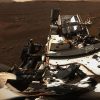 How Perseverance’s Diverse Set of Cameras Will Perform Science on Mars
How Perseverance’s Diverse Set of Cameras Will Perform Science on Mars 